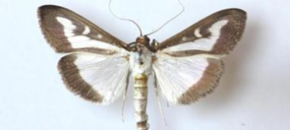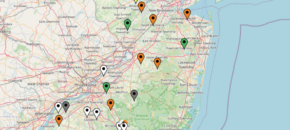WASHINGTON – Today, July 15, the U.S. Environmental Protection Agency is putting protections in place sooner for farmworkers, their families, and the general public near where pesticides are applied. EPA will now assess the potential for people to be e… Read More »
Continue reading...EPA Announces New, Earlier Protections for People from Pesticide Spray Drift
Beat the Heat: Heat Illness Prevention Plans

The University of Houston Clear Lake, using grant funds from the Occupational Safety and Health Administration (OSHA), created a model Heat-Illness Prevention Plan. While heat illness prevention plans are not required for New Jersey employers, review of this model plan may broaden an employer’s knowledge of heat illness prevention strategies. This model plan has five […]
Continue reading...Box Tree Moth on the Horizon – BE VIGILANT NOW, like right now – Resources

Box Tree Moth poses a serious threat to boxwood production, maintenance, and export. Please educate yourself on this important in-bound pest. It is CRITICALY IMPORTANT we stay on top of this issue – as it can cause devastation on par with, or worse than, boxwood blight. We are not looking to cause alarm – just […]
Continue reading...Vegetable IPM Update 7/10/24

Sweet Corn European corn borer (ECB) moth catches are very low and scattered among blacklight traps in the northern and central counties. Larvae are absent from whorl and pre-tassel stage plantings. Should numbers rebound later in the summer, they will be reported in table form. Fall armyworm (FAW) infestations are low and inconsistent in scouted […]
Continue reading...EPA Announces Update on Atrazine (with editorial note on NJ)
[7/8/2024]. Today, the U.S. Environmental Protection Agency (EPA) is announcing an update to the level at which atrazine is expected to adversely affect aquatic plants. The new revised atrazine concentration of 9.7 micrograms per liter (µg/L), which wa… Read More »
Continue reading...EPA Announces Update on Atrazine (with editorial note on NJDEP 2018 ag use data summary)
[7/8/2024]. Today, the U.S. Environmental Protection Agency (EPA) is announcing an update to the level at which atrazine is expected to adversely affect aquatic plants. The new revised atrazine concentration of 9.7 micrograms per liter (µg/L), which wa… Read More »
Continue reading...